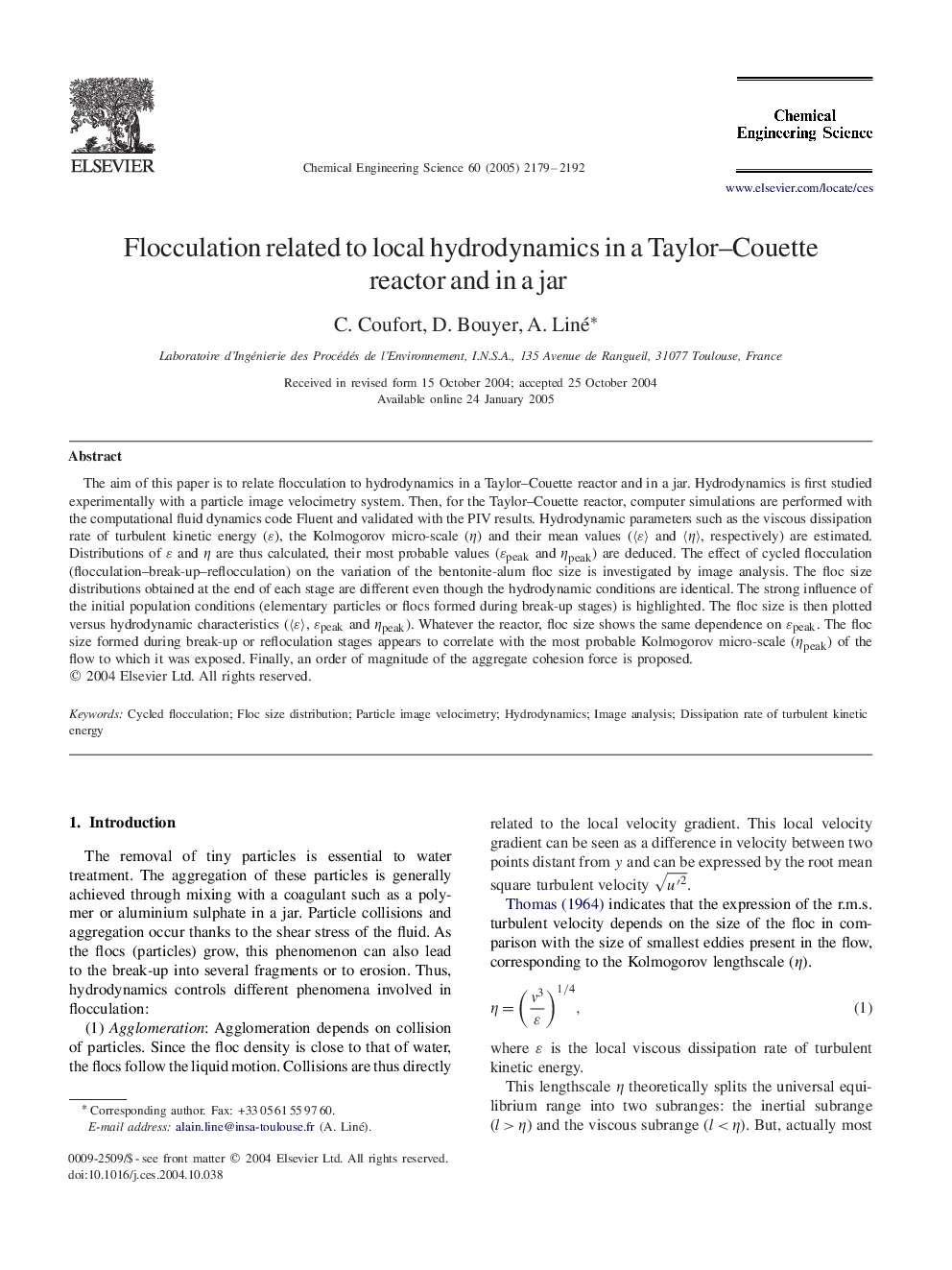| Article ID | Journal | Published Year | Pages | File Type |
|---|---|---|---|---|
| 160425 | Chemical Engineering Science | 2005 | 14 Pages |
The aim of this paper is to relate flocculation to hydrodynamics in a Taylor–Couette reactor and in a jar. Hydrodynamics is first studied experimentally with a particle image velocimetry system. Then, for the Taylor–Couette reactor, computer simulations are performed with the computational fluid dynamics code Fluent and validated with the PIV results. Hydrodynamic parameters such as the viscous dissipation rate of turbulent kinetic energy (ɛɛ), the Kolmogorov micro-scale (ηη) and their mean values (〈ɛ〉〈ɛ〉 and 〈η〉〈η〉, respectively) are estimated. Distributions of ɛɛ and ηη are thus calculated, their most probable values (ɛpeakɛpeak and ηpeakηpeak) are deduced. The effect of cycled flocculation (flocculation–break-up–reflocculation) on the variation of the bentonite-alum floc size is investigated by image analysis. The floc size distributions obtained at the end of each stage are different even though the hydrodynamic conditions are identical. The strong influence of the initial population conditions (elementary particles or flocs formed during break-up stages) is highlighted. The floc size is then plotted versus hydrodynamic characteristics (〈ɛ〉〈ɛ〉, ɛpeakɛpeak and ηpeakηpeak). Whatever the reactor, floc size shows the same dependence on ɛpeakɛpeak. The floc size formed during break-up or refloculation stages appears to correlate with the most probable Kolmogorov micro-scale (ηpeakηpeak) of the flow to which it was exposed. Finally, an order of magnitude of the aggregate cohesion force is proposed.
